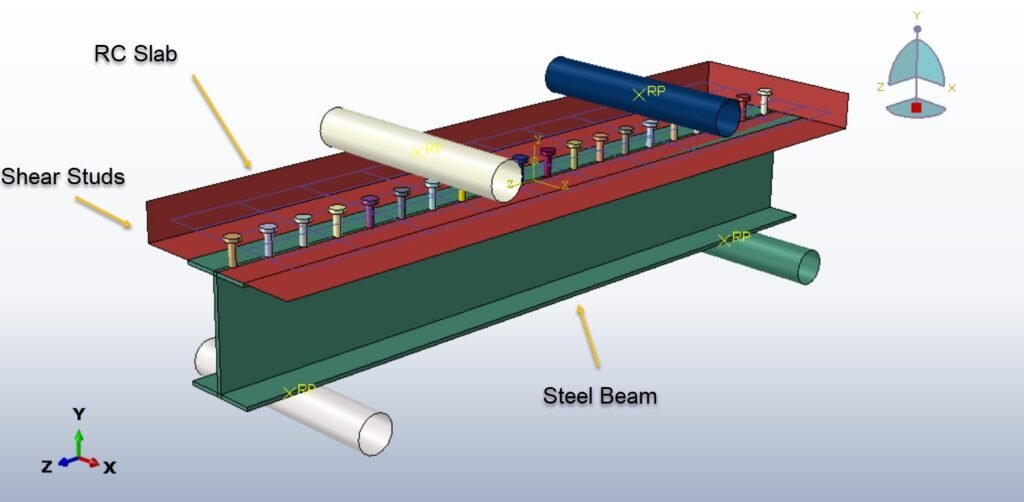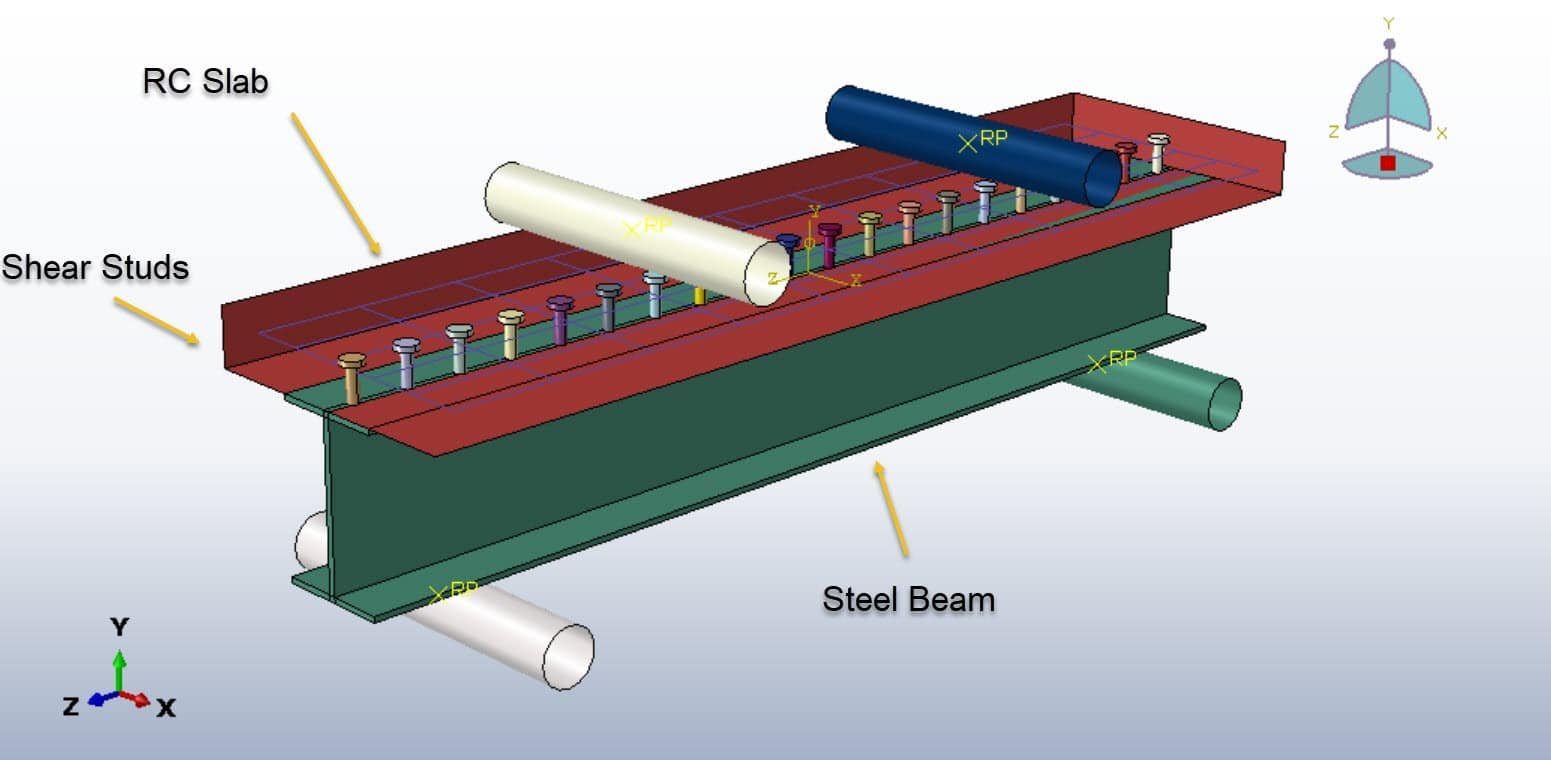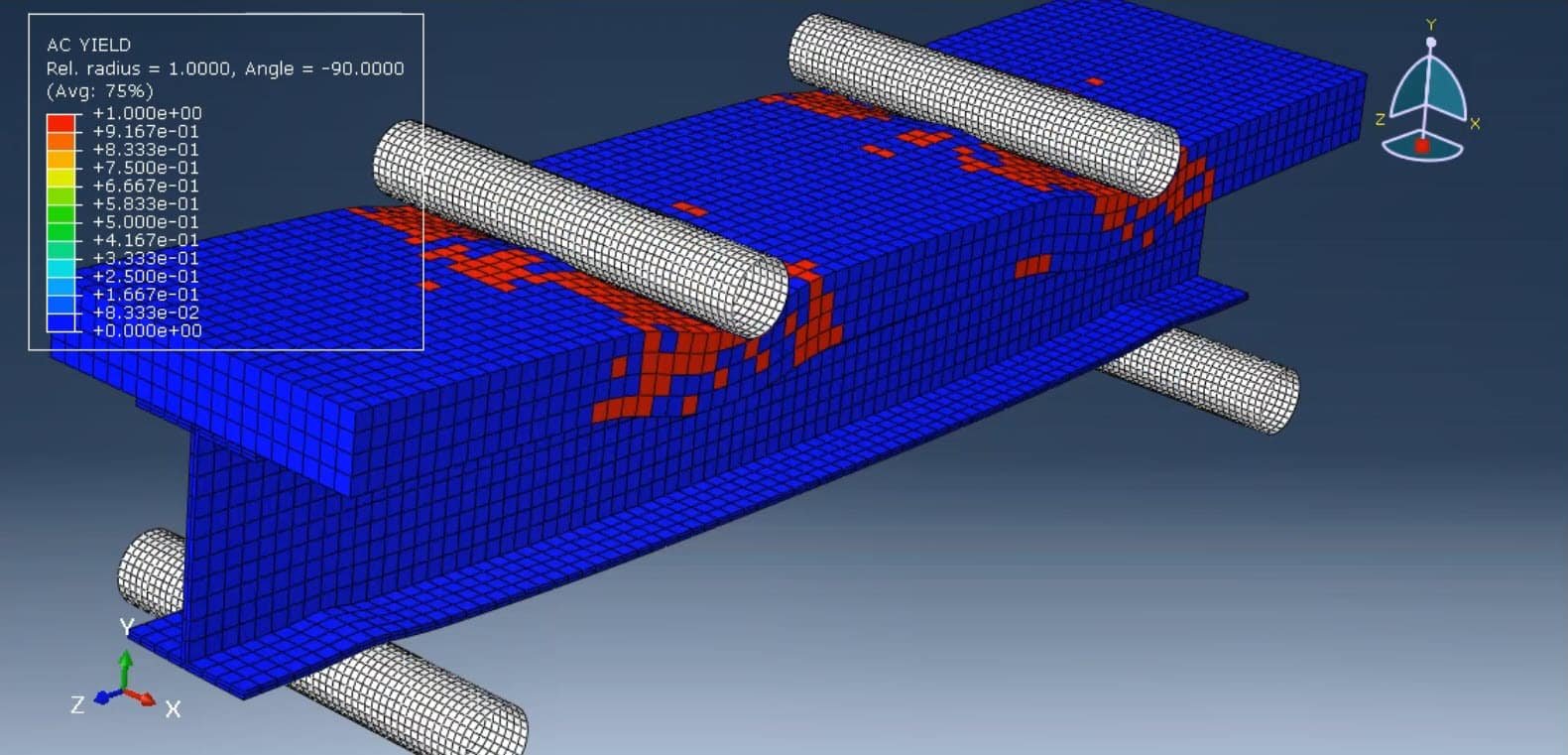Packages & Tutorials
Engineering Files & Tools
Software

Ready-to-use Models (FEA/CFD)

Excel Sheets & Hand Calculations









Steel–concrete composite beams have become a preferred structural system in modern construction due to their superior load-carrying capacity, stiffness, and overall structural efficiency compared to traditional steel or concrete members alone. These beams consist of a steel section, typically an I-beam, integrated with a concrete slab, working together to resist bending through composite action. A key component enabling this interaction is the shear connector—most commonly, headed shear studs—which are responsible for transferring longitudinal shear forces across the steel–concrete interface.
The distribution and configuration of shear studs play a critical role in influencing the flexural performance of composite beams. While full interaction through uniform stud spacing is traditionally assumed for design simplicity, recent studies suggest that varying the distribution of shear studs—particularly in regions of lower shear demand—can lead to material savings and construction efficiency without significantly compromising structural integrity. However, non-uniform distribution can affect stress transfer, crack patterns, deflection, and ultimate load capacity, making it essential to understand the flexural response under such configurations.
This study aims to analyze the impact of different shear stud distributions, uniform, variable, and optimized layouts. On the flexural behavior of steel–concrete composite beams. Key parameters such as load-deflection behavior, strain distribution, crack development, and ultimate moment capacity will be examined to provide insights into efficient yet safe design strategies. The findings are expected to contribute to the development of improved guidelines for shear connector placement, particularly in cost-sensitive or performance-driven applications.
This tutorial is close the paper here: The Effects of Shear Stud Distribution on the Fatigue Behavior of Steel–Concrete Composite Beams


Dynamic
€1,00 €0,00
See more

Want to receive push notifications for all major on-site activities?